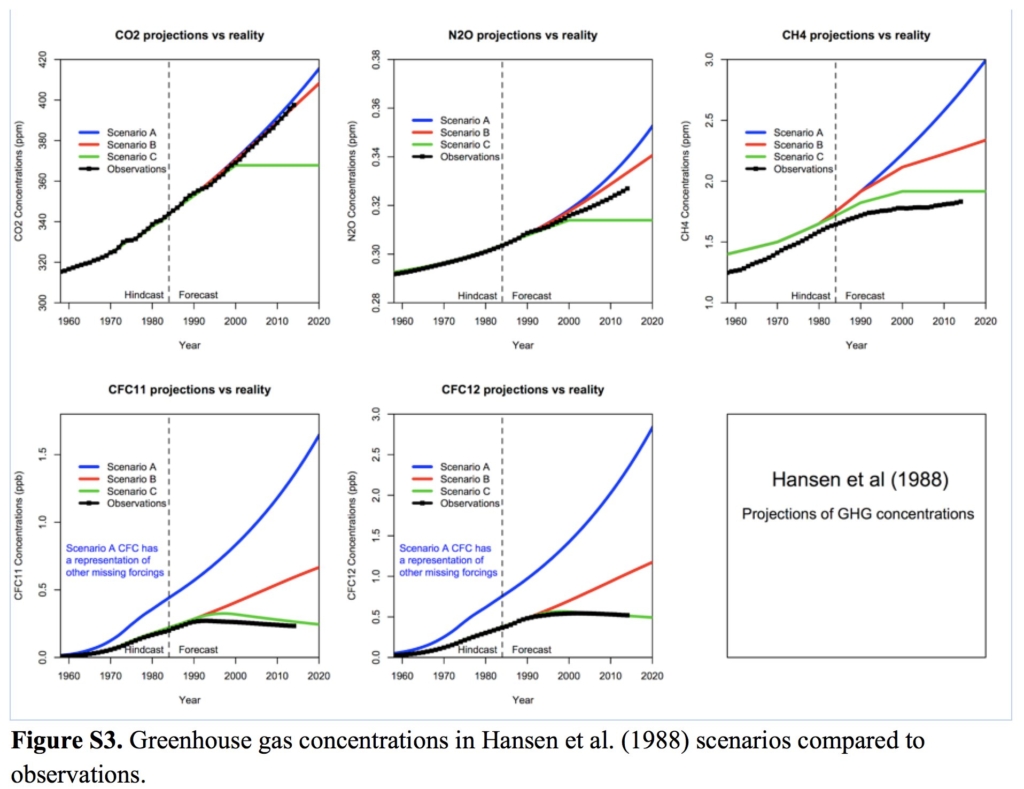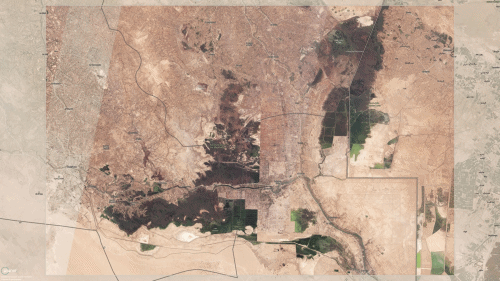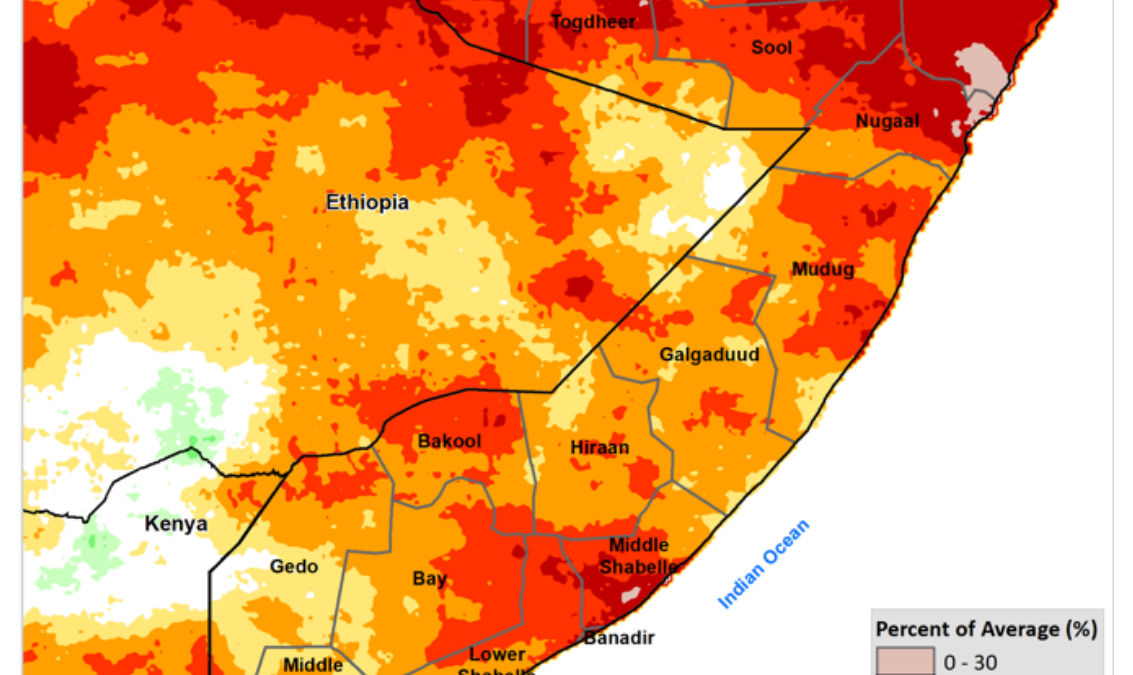Early climate modelers got global warming right, new report finds – “The warming we have experienced is pretty much exactly what climate models predicted it would be as much as 30 years ago”
By Robert Sanders
4 December 2019
(Berkeley News) – Climate skeptics have long raised doubts about the accuracy of computer models that predict global warming, but it turns out that most of the early climate models were spot-on, according to a look-back by climate scientists at the University of California, Berkeley, Massachusetts Institute of Technology and NASA.
Of 17 climate models published between the early 1970s and the late 2000s, 14 were quite accurate in predicting the average global temperature in the years after publication, said Zeke Hausfather, a doctoral student in UC Berkeley’s Energy and Resources Group and lead author of a new paper analyzing the models.
“The real message is that the warming we have experienced is pretty much exactly what climate models predicted it would be as much as 30 years ago,” he said. “This really gives us more confidence that today’s models are getting things largely right as well.”
The results were published today in the journal Geophysical Research Letters and will appear, with Hausfather as a contributing author, as part of the first chapter of the next climate assessment by the Intergovernmental Panel on Climate Change, due out in 2021.
Hausfather and his colleagues at the Massachusetts Institute of Technology and the NASA Goddard Institute for Space Studies evaluated the models based on how well they predicted the actual global mean temperature — Earth’s average temperature — based on the levels of carbon dioxide, methane and other greenhouse gases in the atmosphere. Greenhouse gases, primarily from the burning of fossil fuels, are responsible for a rise of nearly 1.4 degrees Fahrenheit in global mean temperatures since 1880, two-thirds of that since 1975.
The researchers examined both how well models projected future temperatures and how well they matched the relationship between warming and changes in levels of greenhouse gases after they were published. This second approach accounts for the fact that climate modelers can’t necessarily predict future emissions, which are driven by human behavior rather than atmospheric physics.
“We did not focus on how well their crystal ball predicted future emissions of greenhouse gases, because that is a question for economists and energy modelers, not climate scientists,” Hausfather said. “It is impossible to know exactly what human emissions will be in the future. Physics we can understand, it is a deterministic system; future emissions depend on human systems, which are not necessarily deterministic.”
Most models got the physics right
One of the iconic climate models, and one that first brought the issue of climate change to broad public attention, was published by James Hansen of NASA in 1988. However, his predictions for temperatures after 1988 were 50% higher than the actual global mean temperatures in those years.
That is in part because Hanson did not anticipate the Montreal Protocol, a treaty that went into effect in 1989 and which banned chlorofluorocarbons, which are potent greenhouse gases. His estimates of future methane emissions were also off, Hausfather said.
“If you account for these and look at the relationship in his model between temperature and radiative forcing, which is CO2 and other greenhouse gases, he gets it pretty much dead on,” he said. “So the physics of his model was right. The relationship between how much CO2 there is in the atmosphere and how much warming you get, was right. He just got the future emissions wrong.”
Most of the other models also accurately predicted the average temperature when they were given real-world greenhouse gas levels.

Climate models continue to improve, Hausfather said, as they incorporate more and more of the physics and chemistry of the atmosphere, clouds oceans and land. But it is too early to assess how well the current models predict future temperatures because the global mean temperature has a natural variation that can obscure the overall trend. It’s even too early to judge the IPCC’s fourth assessment, which was published in 2007.
Nevertheless, these models have been tested in other ways, including how well they would have predicted past climate variation: what’s called hindcasting.
“Climate models are a really important way for us to understand how the climate could change in the future, and now that we have taken a detailed look at how well past climate models have held up in terms of their projections, we are far more confident that our current generation of models are getting it right,” Hausfather said.
Hausfather’s coauthors are Henri Drake, who is with the Woods Hole Oceanographic Institution Joint Program in Oceanography at Woods Hole and MIT, Tristan Abbott of MIT and Gavin Schmidt of NASA Goddard.
Related information
- Evaluating the performance of past climate model projections (GRL)
- Oceans are warming even faster than previously thought (January 2019)
- Global warming hiatus disproved — again (January 2017)
Early climate modelers got global warming right, new report finds
Evaluating the performance of past climate model projections
ABSTRACT: Retrospectively comparing future model projections to observations provides a robust and independent test of model skill. Here we analyse the performance of climate models published between 1970 and 2007 in projecting future global mean surface temperature (GMST) changes. Models are compared to observations based on both the change in GMST over time and the change in GMST over the change in external forcing. The latter approach accounts for mismatches in model forcings, a potential source of error in model projections independent of the accuracy of model physics. We find that climate models published over the past five decades were skillful in predicting subsequent GMST changes, with most models examined showing warming consistent with observations, particularly when mismatches between model‐projected and observationally‐estimated forcings were taken into account.
SIGNIFICANCE: Climate models provide an important way to understand future changes in the Earth’s climate. In this paper we undertake a thorough evaluation of the performance of various climate models published between the early 1970s and the late 2000s. Specifically, we look at how well models project global warming in the years after they were published by comparing them to observed temperature changes. Model projections rely on two things to accurately match observations: accurate modeling of climate physics, and accurate assumptions around future emissions of CO2 and other factors affecting the climate. The best physics‐based model will still be inaccurate if it is driven by future changes in emissions that differ from reality. To account for this, we look at how the relationship between temperature and atmospheric CO2 (and other climate drivers) differs between models and observations. We find that climate models published over the past five decades were generally quite accurate in predicting global warming in the years after publication, particularly when accounting for differences between modeled and actual changes in atmospheric CO2 and other climate drivers. This research should help resolve public confusion around the performance of past climate modeling efforts, and increases our confidence that models are accurately projecting global warming.
Evaluating the performance of past climate model projections



